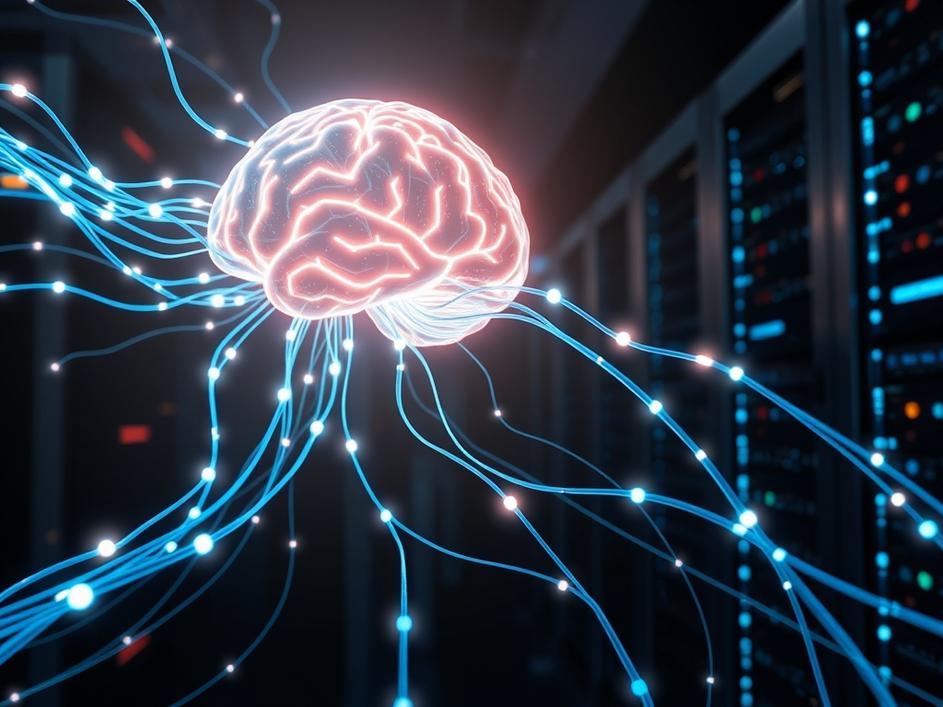


We are a digital agency helping businesses develop immersive, engaging, and user-focused web, app, and software solutions.
2310 Mira Vista Ave
Montrose, CA 91020
2500+ reviews based on client feedback

What's Included?
ToggleNews broke recently that Nvidia, the chip giant everyone’s talking about, is putting a massive $1 billion into Nokia. Yes, that Nokia – the one many of us remember for sturdy phones. This isn’t just a simple investment; it’s a deep dive into working together, especially around AI networking. Think about it: Nvidia, known for making the brains of AI, is now teaming up with a company that builds the very pipes and cables that carry all that brainpower’s data. It’s a bit like a super-fast car manufacturer deciding to invest heavily in the company that builds the roads. It shows how serious everyone is getting about AI, and it points to a future where the connections are just as important as the processing power itself. This partnership isn’t just about money changing hands; it’s a strategic move that could change how we build the internet of tomorrow, especially for artificial intelligence.
We hear a lot about AI needing powerful chips, and Nvidia certainly delivers on that. But what happens when you have a super-smart brain that can’t get information fast enough? Or can’t send its thoughts out quickly? That’s where networking comes in. Modern AI, especially the kind that builds complex models or runs huge language programs, needs to move incredible amounts of data around. It’s not just moving data to the chips, but also between them, and out to the world. Imagine a giant data center where thousands of AI chips are all working together. If the network connecting them isn’t up to speed, it creates a bottleneck. The whole system slows down. Nvidia knows this. They understand that their amazing chips can only be as good as the network they operate on. So, investing in Nokia means they’re aiming to make sure the data flows smoothly, without any traffic jams, allowing their AI brains to truly shine.
For many years, Nokia has been a quiet giant in the background, focusing on telecommunications equipment, networking infrastructure, and things like 5G. While they weren’t always in the flashy headlines like tech companies building consumer gadgets, they’ve been essential. This investment from Nvidia feels like a huge nod of approval and a chance for Nokia to step into a new spotlight. It says, “Nokia’s expertise in building robust, reliable networks is absolutely critical for the future.” It gives them a fresh push, a big vote of confidence, and a clear path to be a central player in the AI era. This isn’t just about new money; it’s about new energy and a chance to reshape their role, moving from just connecting people to connecting the very intelligence that will drive the next generation of technology. It’s a powerful statement about their relevance in a fast-changing world.
Nvidia isn’t just selling chips anymore; they’re selling an entire ecosystem. They want to be at every step of the AI journey, from the hardware that processes information to the software that makes it run, and now, even the networks that carry the data. This investment in Nokia fits perfectly into that larger plan. It shows they’re thinking beyond just silicon. They want to provide the full stack – everything you need to build and run AI at scale. By partnering with Nokia, they’re essentially extending their reach into the critical networking layer, ensuring that their AI solutions have the best possible foundation. It’s a smart move to make sure their chips aren’t held back by subpar infrastructure, and it strengthens their position as a leading force in AI, not just as a chip maker but as an end-to-end solutions provider. They’re not just making the engines; they’re making sure the entire car is built for speed.
This partnership could set a new standard for how AI infrastructure is built. We might see data centers and telecom networks start to look very different. Imagine networks designed from the ground up not just to move data, but to move AI data with specific requirements for speed, latency, and reliability. This collaboration between Nvidia and Nokia could lead to entirely new ways of managing network traffic, optimizing connections for AI workloads, and pushing the boundaries of what’s possible in terms of data transfer speeds. It’s not just about faster internet; it’s about smarter, more purpose-built networks that can handle the intense demands of artificial intelligence. Other companies in the networking space will surely be watching closely, and this could spark a new wave of innovation and competition in building the underlying infrastructure for our AI-powered future.
This investment also has a bigger global context. Every major nation and tech company is racing to build out its AI capabilities. This isn’t just about who has the best algorithms or the most powerful supercomputers. It’s also about who has the best, most reliable, and fastest infrastructure to support all of that. By combining Nvidia’s AI processing power with Nokia’s networking know-how, this partnership directly addresses a crucial piece of that puzzle. It’s about laying the groundwork, literally and figuratively, for the next generation of digital power. The speed and efficiency of data movement can be a decisive factor in how quickly AI models can be trained, deployed, and ultimately, how effective they become. So, this isn’t just a corporate deal; it’s a strategic move in the global competition for AI dominance, focusing on the often-overlooked but utterly vital physical and digital wiring that makes it all possible.
So, when you hear about Nvidia putting a billion dollars into Nokia, don’t just think about old phones or fancy chips. Think about the hidden highways that AI needs to run. This partnership is a clear sign that the future of AI isn’t just about powerful brains; it’s just as much about the super-fast nervous system that connects everything. It highlights how deeply integrated technology is becoming and how crucial every piece of the puzzle, from the smallest chip to the biggest network, truly is. It’s a fascinating look at how two very different giants are coming together to build the essential backbone for a world that will increasingly rely on artificial intelligence. Keep an eye on the wires, because that’s where a lot of the magic will happen.



Leave a reply